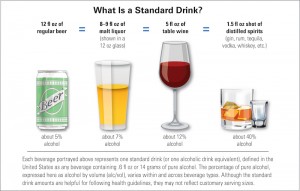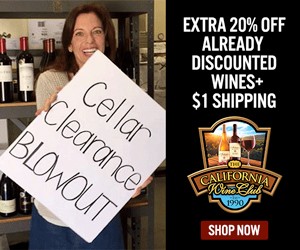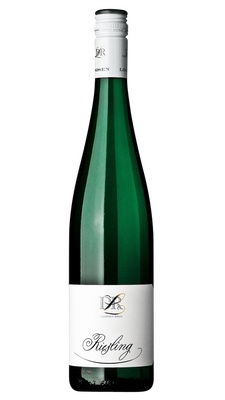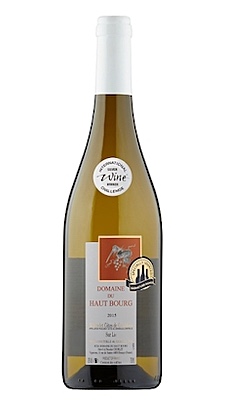Alcohol: It’s both a blessing and a curse.
Cellar Clearance Blowout
The California Wine Club is making room for new wines. Use promo code BLOWOUT to take an extra 20% off already discounted selected wines, with $1 shipping. Stock up and save with this big sale. Sale ends June 14, 2019!
Click to see the wines.
Browse the world’s ten best value wines on Wine-Searcher.com!
A little is harmless for most people, but excessive consumption doesn’t do anyone any good.
Wine, like other so-called adult beverages, contains alcohol, and the alcohol is an essential ingredient. There’s no argument about this, and if you don’t think the alcoholic component is important, go try a dealcoholized wine and get back to me.
Most wine-loving adults understand that the presence of alcohol in our favorite beverage as a part of the wine experience. Physicians call beverage alcohol a “mild depressant” based on its effect on the body. Some unknown philosopher once described beverage alcohol as a “social lubricant.”
According to a post on social drinking at DrugRehab.com, “For many, it can ease stress and increase pleasure. … Many people tend to feel relaxed when drinking socially. This is because alcohol affects brain function, changing moods and behaviors. It binds to receptors in the brain that boost dopamine levels, which activate pleasure.”

This chart from the U.S. National Institutes of Health shows the varying sizes of liquor servings depending on alcohol content.
In short, moderate alcohol consumption adds to the pleasure of wine and other alcoholic beverages for most people. Moreover, it appears to be a necessary element in the aroma, flavor and, perhaps most important, textural qualities that we look for in fine wine. This is one reason why those non-alcoholic wines I mentioned don’t satisfy most wine lovers: Taking the alcohol out of wine doesn’t remove only the “buzz.” It yields a light, watery fluid that doesn’t much resemble real wine.
Hardly anyone will dispute the truth that consuming too much alcohol is bad. Drunks cause accidents and kill people; chronic alcoholism may destroy both the body and the family. These are not matters to trifle with, and there’s a good reason why most societies limit the sale of alcohol to adults who are presumably capable of making wise decisions.
As we as wine lovers seek to balance pleasure and excess, it’s helpful to remember that the world of wines offers a surprising range of alcoholic content. Most table wines in the U.S. range between 11 and 15 percent alcohol, although those at the top of that range fall into some quirky labeling issues with regulators. But some wines are as light as 5 percent alcohol or less (like the sweet, fruity Moscato d’Asti from Italy, which technically can’t be labeled as “wine” in the U.S.); and some light, sweet German wines, like the refreshing Mosel Riesling in today’s tasting reports below) may reach only 8 to 10 percent.
At the high end of the wine scale, some of the biggest New World Zinfandels and other big red wines ferment out naturally at 15 percent or above, and powerful brandy-fortified wines like Port and some Sherries can reach 18 to 22 percent. Among other alcoholic beverages, most beers range from about 3 to 7 percent alcohol, while liquor rises into heady ranges up to 50 percent alcohol or more. (This, by the way, is why beer is often served in pint glasses or big mugs, while liquor is usually measured out by the ounce.)
At the end of the day, recognizing that blessing-and-a-curse thing, it’s not a bad idea to be aware of the alcohol content of the drink we are about to consume. Sipping a powerful nectar can be a blissful experience, but it makes sense to check the details on the label before we pour.
Cheers!
Today’s Sponsor:
Cellar Clearance Blowout
 The California Wine Club is making room for new wines. Use promo code BLOWOUT to take an EXTRA 20% off already discounted selected wines, with $1 shipping. Stock up and save with this big sale.
The California Wine Club is making room for new wines. Use promo code BLOWOUT to take an EXTRA 20% off already discounted selected wines, with $1 shipping. Stock up and save with this big sale.
Click to see the wines.
Cellar Clearance Blowout Sale ends June 14, 2019. Some restrictions may apply.
Click to see the offer.
About The California Wine Club:
There are thousands of small family wineries handcrafting extraordinary wine in quantities too limited to be found in local stores or shops. In 1990 The California Wine Club founders Bruce and Pam Boring discovered that these winemaking families were the most passionate in the wine world and that their wines were the hidden gems of wine country! Together Bruce and Pam embarked on a journey to help these artisan wineries introduce their exquisite wines to the world. Learn more.
www.cawineclub.com 1-800-777-4443
Today’s Tasting Report
Loosen Bros. 2017 “Dr. L” Mosel Riesling Qualitätswein ($12.99)
At just 8.5% alcohol, this Mosel Riesling falls near the lower end of the alcoholic spectrum for wine. Very pale, clear gold in color, its light carbonation shows as a quiet pop when the screw cap is cracked and as tiny bubbles that line the glass when the wine is poured. Ripe aromas of peaches and melon fill the nose, and carry over on the palate in a juicy, gently sweet fruit flavor. Brisk, cleansing acidity becomes more apparent on the mid-palate, with subtle stone and slate minerality hovering around the edges in a long finish. It may not be a great Mosel at this entry level, but it’s a clean, well-made low-end Mosel and a good value. U.S. importer: Loosen Bros. USA Ltd., Salem, Oregon. (June 6, 2019)
FOOD MATCH: Riesling is one of the world’s most versatile white wines for food matching, and should work with just about any white-wine pairing. Rich seafood dishes would serve it particularly well, and it should also be a natural with pork or ham. Its fruity sweetness should also sing with spicy Thai and Vietnamese dishes.
WHEN TO DRINK: It’s not designed for long-term cellaring, but there’s no rush to drink it up. Riesling can take age surprisingly well, particularly with this bottle’s sturdy screw cap.
VALUE:
My local price is a bit above Wine-Searcher.com’s $11 average retail, and it’s worth noting that some U.S. vendors offer it as low as $9. Still, it’s a fine Mosel, and I’d buy it again.
WEB LINK
Loosen Bros. website offers this overview of its “Dr. L” wines, with links to fact sheets on the regular, dry, and sparkling offerings.
FIND THIS WINE ONLINE:
Locate vendors and check prices for Loosen Bros. “Dr. L” Mosel Riesling on Wine-Searcher.com.
Read more about the Mosel and find links to more than 500 good Mosel wines and vendors at this Wine-Searcher.com link.
Domaine du Haut Bourg 2015 Muscadet Côtes de Grandlieu sur Lie ($11.99)
Bright, transparent straw color with a distinct brassy-green hue, with a scattering of bubbles on the glass. Fresh and inviting honeydew melon scent leads into a bright flavor profile of juicy, slightly sweet white fruit framed by mouth-watering acidity and a prickly petillance on the tongue, with modest 12% acidity. Subtle mineral flavors, chalk and granite, show off the complexity that comes with sur lie vinification and Muscadet terroir U.S. importer: Vanguard Wines, Columbus, Ohio. (May 17, 2019)
FOOD MATCH: A natural with seafood or delicate fish, it would also go well with summer dinner salads.
WHEN TO DRINK: It’s best drunk up while it’s fresh. This 2015 is still showing well, but I wouldn’t advise cellaring it.
VALUE:
It’s a fair buy in the neighborhood of Wine-Searcher.com’s $13 average retail.
WEB LINK
This page from Polaner Selections, another importer, offers a good overview of Hervé et Nicolas Choblet’s Domaine du Haut Bourg, with links to details on several of their vintages.
FIND THIS WINE ONLINE:
Compare prices and locate vendors for Domaine du Haut Bourg 2015 Muscadet Côtes de Grandlieu sur Lie on Wine-Searcher.com.
Search for hundreds more Muscadet wines and locate vendors at this link on Wine-Searcher.com.
More affordable wines
Want tips to still more good, inexpensive wines? Here are Wine-Searcher links to vendors and prices for a bunch more wines for $10 or less that I’ve told you about during the past year or two. Please tell us about your favorites!
Wine Forum and Social Media
If you have questions, comments or ideas to share about today’s article or wine in general, you’re always welcome to drop by our online WineLovers Discussion Group, the Internet’s first and most civil online community.
Discussions are open for public viewing, but you must register to post. If you’re a Facebook user, you can join our forum with a single click! All you need to do is visit the forum and click “Social Login” at upper right.
We’d also be delighted to have you visit and “Like” our WineLovers Facebook Page. This way you can get Facebook notifications when there’s a new The 30 Second Wine Advisor issue or a topic of particular interest on the WineLovers Discussion Group (WLDG).
Subscriptions and Administrivia
Unsubscribe:
We’re sorry if you must leave us, but simply click the “unsubscribe” link at the bottom of your Email edition to be instantly removed from the mailing list.
Change address:
The quickest and easiest way to change your email address is simply to unsubscribe from your old address and register again from the new one: Subscribe to The 30 Second Wine Advisor (free).
Archives:
Read nearly 20 years of past articles in the Wine Advisor Archives.
Sponsorship Opportunities:
For information, email Robin Garr at wine@wineloverspage.com






